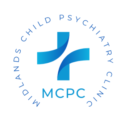- Awesome Services
ADHD
- Attention Deficit Hyperactivity Disorder (A.D.H.D.)
Explore How Can We Help You

ADHD
Attention-Deficit/Hyperactivity Disorder (ADHD) is a neurodevelopmental disorder that affects both children and adults. ADHD is characterized by persistent patterns of inattention, hyperactivity, and impulsivity that can impact various aspects of daily life. There are three main subtypes of ADHD:
- Predominantly Inattentive Presentation:
- Difficulty sustaining attention in tasks or play activities.
- Frequent careless mistakes in schoolwork or other activities due to a lack of attention to detail.
- Forgetfulness in daily activities, such as forgetting to complete chores or keep appointments.
- Predominantly Hyperactive-Impulsive Presentation:
- Excessive fidgeting or restlessness.
- Difficulty remaining seated in situations where it is expected.
- Impulsivity leads to hasty decisions without considering the consequences.
- Combined Presentation:
- A combination of both inattentive and hyperactive-impulsive symptoms.
Key features of ADHD include:
Inattention:
- Difficulty sustaining attention in tasks or play activities.
- Frequent careless mistakes in schoolwork or other activities due to a lack of attention to detail.
- Forgetfulness in daily activities, such as forgetting to complete chores or keep appointments.
Hyperactivity:
- Excessive fidgeting or restlessness.
- Difficulty remaining seated in situations where it is expected.
- Impulsivity leads to hasty decisions without considering the consequences.
Impulsivity:
- Difficulty waiting for one's turn.
- Interrupting or intruding on others' conversations or games.
- Difficulty inhibiting inappropriate comments or actions.
ADHD symptoms can significantly impact academic, occupational, and social functioning. It's important to note that the presentation of symptoms can vary among individuals, and the severity of symptoms may change over time.
The exact cause of ADHD is not fully understood, but it is believed to involve a combination of genetic, neurological, and environmental factors. Diagnosis is typically based on a comprehensive assessment considering the individual's history, behavior, and symptoms. Treatment approaches often involve a combination of behavioral interventions, psychoeducation, and, in some cases, medication.
Key characteristics of Autism Spectrum Disorder include:
- Social Challenges:
- Difficulty understanding and interpreting social cues, such as facial expressions, body language, and tone of voice.
- Challenges in developing and maintaining relationships with others.
- Communication Differences:
- Delayed or impaired language development.
- Difficulty in initiating or sustaining conversations.
- Unusual use of language, such as repetitive speech or difficulty understanding metaphors.
- Repetitive Behaviors and Intense Interests:
- Engaging in repetitive movements or activities, such as hand-flapping or rocking.
- Developing intense interests in specific topics and becoming highly knowledgeable about them.
- Sensory Sensitivities:
- Heightened or reduced sensitivity to sensory stimuli, such as lights, sounds, textures, or smells.
- Unusual reactions to sensory experiences, like covering ears in response to loud noises.
- Routines and Rituals:
- Strong preference for routines and rituals, with distress or discomfort when these are disrupted.
- Resistance to changes in environment or daily activities.
It's important to note that individuals with ASD may excel in certain areas, such as mathematics, music, or art. The term "spectrum" reflects the range of abilities and challenges individuals with autism may exhibit.
The exact cause of Autism Spectrum Disorder is not fully understood, but it is believed to involve a combination of genetic and environmental factors. ASD is typically diagnosed in early childhood, and early intervention and support can significantly improve outcomes for individuals with autism.

